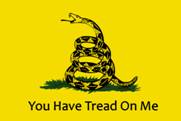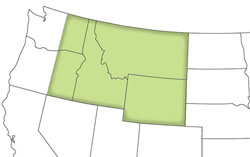As the downward spiral continues, people need a genuine source of hope. Patriot Rockstars who whine and bitch about the twenty millionth awful thing the Establishment did this week not only do not move the case for Liberty forward, but in fact keep people in a perpetual condition of fear, apprehension, and disbelief, instead of promoting the virtue of COURAGE amongst dissidents. It would behoove all of us to examine what historically has worked in not only instilling courage, but also provided the structural organization with which to effectively resist tyrants.
According to English common law, it is a natural right to associate with other people; one derivation of this is to associate with like-minded individuals for the express purpose of providing collective defense. As Bastiat has stated, the purpose of the Law was to provide for collective self-defense. If the ruling government has neglected to perform this essential function, or worse, deliberately acts contrary to it, they have proven by their actions that the domestic population is, for all intents and purposes, outside the scope of their protection. Considering British history with its various civil wars, it has come to pass that the folk in a local area (say, the equivalent of a neighborhood) would have to organize themselves to provide for their own defense.
While these general associations for local self-defense were intended to be a force multiplier and a stabilizing influence for promoting justice as well as defense within a town or hamlet, they weren’t always given the exact same name. Sometimes they were known as Committees of Protection, Committees of Supplies, Councils of Safety, Committees of War, Committees of Inspection, Committees of Observation, Committees of Inquiry, and many others. This is indicative of their truly grassroots nature, which is alien to even most contemporary dissidents who are much more accustomed to a centralized hierarchical structure where the authority flows downward instead of upward. Taking into account the history of this type of association, as well as the frequency of which titles were used most often, for the sake of simplicity I will refer to these mutual self-defense associations as Committees of Safety.
In republican minarchist political theory, the military submits to a civil authority. This separation of the military from the civilian government is designed to prevent a concentration of power, which is assumed to be a key component that gives rise to tyranny. Now, it is possible for a self-formed militia unit to create their own civil authority, as the New York militia did (the result of which was that their Committee of Safety ordered them to incarcerate Governor Andros). Admittedly, it is more proper (time permitting) for a Committee of Safety to be organized organically from amongst the inhabitants of a particular locale and then for that Committee to raise (and train) the local militia units.
Committees of Safety (CoS) had conciliators during their meetings, not to dictatorially control those meetings (which is sadly all too common with city councils nowadays), but to simply provide order to them so that business could be accomplished. It was not uncommon for CoS meetings to be run using parliamentary procedure for the same reason. The goal of a CoS was to carry out the will of the people, not to control it by acting as a “star” chamber or a contemporary version of executive authority, but as a typical committee and as a Committee of the Whole.
Keep in mind as well that republicanism is based upon bottom-up delegation. Local CoS would send delegates to larger Committees, which in turn would go up the ranks to the colonial level (such as the Massachusetts Provincial Congress, later, the Massachusetts Committee of Safety). These colonial-level CoS likewise sent delegates to form Continental Congresses, the Second of which produced the Declaration of Independence.
On the lead up to the Battle of Lexington and Concord, the Roxbury, Cambridge, and Charleston Committees of Safety established sentries along the paths of egress from Boston. Paul Revere (and many others) served CoS as couriers as well as spies. The Lexington CoS, upon hearing a warning from the Menotomy Provincial Committees of Safety and Supplies about British troop movements, mustered the Lexington militia with the original mission of guarding Samuel Adams and John Hancock. Following the events of Lexington and Concord, the Cambridge CoS decided to raise militia units with the goal of enlisting 8,000 men. Various CoS were also engaged in an infowar with General Gage about the meaning of the recent series of skirmishes themselves, which has been since referred to as the “second battle of Lexington and Concord.” Throughout the rest of the Revolutionary War, multiple CoS in various colonies were constantly engaged in the task of determining individual loyalties towards the cause for independence; those who chose to remain as Tories were typically either ostracized or incarcerated until they chose to join the local association.
Membership in any contemporary CoS should be as inclusive as possible, since it is fundamentally composed of the residents who live within a particular area. Usually, those who are to be excluded are those who possess titles of nobility, as well as those who refuse to recognize the different statuses of citizenship, although this is to be determined in local areas. Active duty law enforcement, bar attorneys, and banking officers are automatically excluded, as well as any others who are excluded for just cause. Leadership of a CoS should not be headed by those who benefit from sensationalism, but should be allocated towards those individuals who listen, empathize, and work to conform by consensus, and not by those who dictate. Single-issue advocacy is not appropriate to a CoS, which by its design is a governing body, not an affinity group. Many “single issue grievances” are outside the scope of authority of a CoS.
It cannot be emphasized enough that the rights of association and contract are the key towards organizing effectively against tyrants. Modern Committees of Safety can step in during the aftermath of a natural disaster and fulfill whatever the federales are commonly expected to do. CoS can also be useful during relatively peaceful times through community service projects. Painting an old lady’s house, picking up trash, and planting trees are all good ways to build rapport within the local community and encourage them to join the general association, which lends even more legitimacy to their local Committee of Safety.
Unlike other modern political methods that either are experimental or just flat out don’t work, Committees of Safety actually have a reliable track record of repeatedly securing people’s Liberty. Working inside the system is a recipe for disaster, since the mainline political process methodologically fails to do much other than permitting the special interests to perpetually benefit from government privilege (or economic favor) as well as keeping the rebel government itself (those who have usurped power outside the bounds of what was granted by the federal Constitution and various state constitutions) in power. It is time to step up to the plate and organize our local areas to provide for mutual aid and defense, and the best way to do that is by establishing a Committee of Safety in your town or neighborhood with at least three people you trust.
For more information on Committees of Safety (and how to establish and run one), please consult the Committee of Safety Starter Kit, and also feel free to browse the Committee.org website.





















